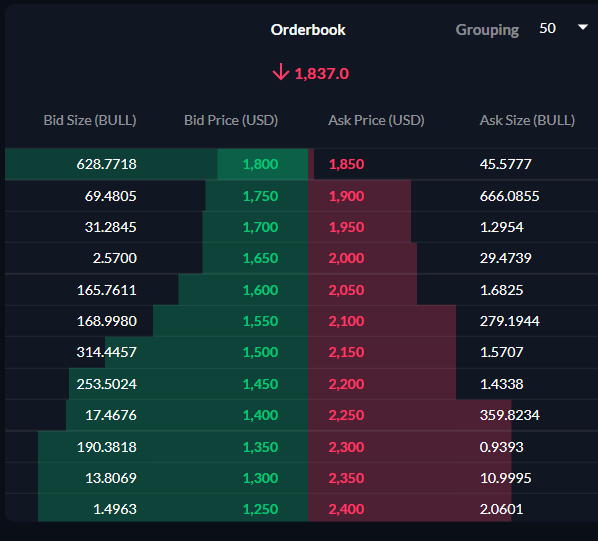Leveraged tokens (LT) are gaining popularity among many advanced cryptocurrency traders. In this article, we will look at what these leveraged tokens are, how to trade them, the top opportunities in the industry, the overall risks involved, and how to avoid them.
What are leveraged tokens?
There are multiple ways of trading and investing in cryptocurrencies. The most basic one is buying real coins at their spot prices using exchanges like Coinbase, Binance, and Kraken. This is the model that most people use.
Another way is using contracts for difference (CFD). A CFD is a financial derivative mostly offered by forex brokers that track the price of a real asset. By owning a CFD, you do not own the real cryptocurrency, but you will benefit from its movements.
The third method, which is often significantly risky, is the use of leveraged tokens. In finance, leverage refers to a situation in which a person takes a loan to maximize their returns. For example, assume that a stock is trading at $10 and you have $10,000. In this case, you can buy 1000 shares, and if the stock rises to $15, you will have a profit of $5,000.
However, if you took an additional $10,000 loan, it means that you will buy 2,000 shares. If the stock goes to $15, you will have a total of $30,000. Excluding the $10,000 loan, you will now have $20,000 and a profit of $10,000. This is how leverage works.
The second part is a token. An LT is a financial derivative that is created using popular standards like ERC-20, BEP-20, and TRC-20. The three are the standards for Ethereum, Binance, and Tron ecosystems.
Therefore, adding the two together brings us to a conclusion that a leveraged token is a financial derivative that gives an investor access to leveraged positions instantly. Therefore, think of a token like MATICBULL/USD, which is referred to as 3x Long Matic Token. This is a leveraged token that gives you access to three times the return. Therefore, if MATIC rises by 1%, the asset will give you a three-time return.
Types of leveraged tokens
Below are four main types of LTs that you can buy and sell in the market.
- BULL – A BULL token means that you will make money when the price rises by the specified amount. For example, ADABULL/USD, which is 3x Long Cardano, means that a 1% increase in Cardano will result in 3x returns.
- BEAR – A BEAR token is the exact opposite of BULL. It means that if a coin falls by 1x, your loss will be three times that.
- On the other hand, HALF- Half refers to a situation where the amount of possible reward is half. If ADA goes up by 1%, it means that ADAHALF will go up by half.
- HEDGE – Finally, a hedge rises or falls by 1% when the main coin rises or falls by the same amount.
It is worth noting that these tokens work in a quite more complex way than other tokens due to involving perpetual futures. For example, with FTX, you can create $5,000 worth of perpetual futures by depositing the same amount in FTX.

Perpetual futures differ from the mainstream ones simply because they do not have an expiry date. The chart above shows examples of these leveraged tokens.
How to trade leveraged tokens
There are several strategies that you need to follow to trade leveraged tokens. First, you need to create a trading account with a broker that accepts these tokens. Unfortunately, because of the risks involved, these derivatives are not provided in all countries.
For example, while FTX is a market leader in these tokens, it does not offer them in the United States. Therefore, it is important that you find a broker that accepts them.
The next stage is that you need to learn about what these tokens are and how they work. Again, because of the risks involved, we recommend that you first start trading in the spot market that is not as risky. If you succeed in spot trading, there is a likelihood that you will find success in LT.
After depositing funds, you now need to conduct an analysis so that you can determine what to buy. There are several parts to this. First, there is technical analysis, which involves using popular indicators like Moving Averages and Relative Strength Index (RSI). You should also use other tools like the Fibonacci retracement and Andrew’s pitchfork to determine critical price levels. The chart below shows the indicator panel of FTX.

Next, you should incorporate the concept of fundamental analysis in your decision-making. This is where you try to assess whether the leveraged token will keep rising or retreat due to project news updates. You could look at the macro factors such as the Federal Reserve or on-chain data.

Most importantly, it is always recommended to look at the order flow to see how traders are buying and selling the token. That analysis can help you to determine your entry points.
LT rebalancing
Another way in which leveraged tokens are different is because of a concept known as rebalancing, which happens once every day. The process involves reinvesting the gains or losses that were achieved in the specific period. In the case of a profitable trade, the token will reinvest the cash, while in case the token loses some cash, it will sell off some of the position to avoid liquidation.
Summary
Leveraged tokens are popular tools in the blockchain industry. They have become extremely well-known such that FTX has grown to become the third-biggest cryptocurrency in the world after Binance and Coinbase. While these tokens are good, they are also extremely risky, meaning that you should exercise a lot of caution.




